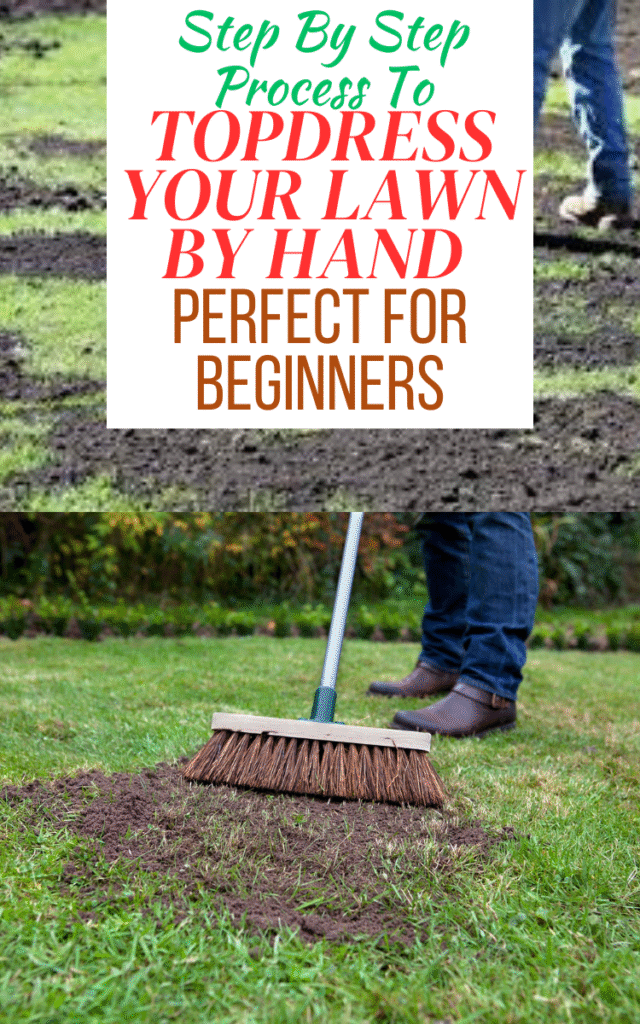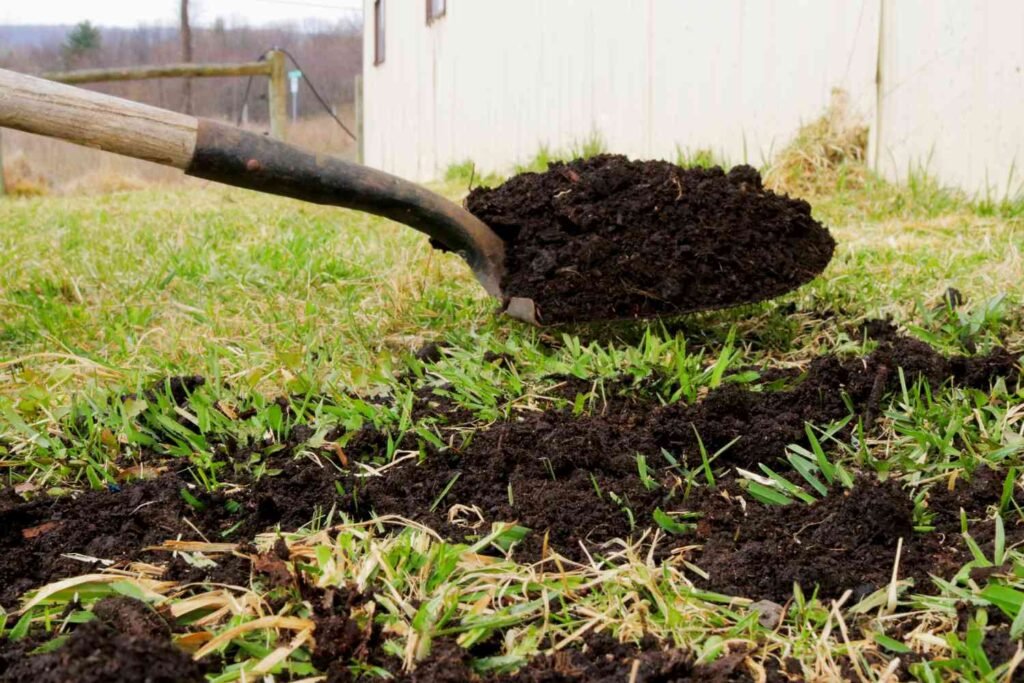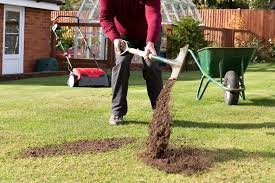
The first time I tried topdressing my lawn, I didn’t have a clue what I was doing. I dumped a couple of wheelbarrows of compost straight onto the grass and spread it around with a rake. The result? Clumpy piles, patches of smothered grass, and a lawn that looked worse than before. A week later, I promised myself I’d figure out the right way to do it.
Since then, I’ve learned that topdressing is one of the simplest and most rewarding things you can do for your lawn—if you do it properly. A light layer of compost or sand builds healthier soil, smooths bumps, and encourages thicker, greener growth. The best part? You don’t need fancy machinery. With a shovel, a rake, and a little patience, you can handle it all by hand.
Let me walk you through the exact process I use now—broken down step by step—so you can avoid the mistakes I made and get results you’ll be proud of.
Before You Start: Plan It Right
Check Lawn Health & Timing
Not every season is a good time to topdress. For cool-season grasses like fescue or bluegrass, early fall or mid-spring are the sweet spots. For warm-season grasses like Bermuda or zoysia, late spring through midsummer works best, after the lawn is fully green. Avoid doing it during a heatwave or drought—you’ll only stress the grass further.
I also make sure the lawn is slightly moist before starting, but not muddy. A day or two after rain is usually perfect. And always check the forecast—you want a few dry days afterward so your hard work doesn’t wash away.

Choose the Right Material
The material you spread makes all the difference. Screened compost (fine and crumbly) is my go-to because it feeds the soil with organic matter and nutrients. If you’re mainly trying to level bumps, washed sand works well. Many people use a mix—compost blended with sand or topsoil—for the best of both worlds.
Here’s a quick guide:
- Heavy clay soil → 70% sand, 30% compost.
- Sandy soil → 70% compost, 30% sand.
- Loamy soil → a balanced 50/50 mix.
One word of warning: don’t use unfinished compost or anything that smells sour—it can burn your grass.
Gather Your Tools
By hand, you don’t need much:
- Wheelbarrow and shovel
- Garden rake or, ideally, a leveling rake
- Stiff push broom
- Buckets for carrying small loads
- Gloves and a tarp for staging material
If your soil is compacted, a manual core aerator is a great optional add-on, but not a must.
How Much Material Do You Need?
Here’s where a little math helps. You want a thin layer—about ⅛ to ¼ inch—spread across the lawn. That’s just enough to benefit the soil without burying the grass.
For reference:
- 1 cubic yard at ¼ inch covers about 1,300 square feet.
- At ⅛ inch, it covers about 2,600 square feet.
Example: if your lawn is 2,000 square feet and you want a ¼ inch layer, you’ll need about 1.5 cubic yards of material. It’s better to buy slightly less and go thin than to overdo it and smother the lawn.

Step-by-Step: Topdress Your Lawn By Hand
Step 1 — Mow Low (But Not Too Low)
Start by mowing your lawn one notch lower than usual and bagging the clippings this time. This exposes more of the soil surface and makes it easier to brush in your topdressing. Just don’t scalp the grass—leave at least a couple of inches.
Step 2 — Optional: Dethatch or Hand Aerate
If you’ve got a thick thatch layer (more than half an inch), grab a dethatching rake and pull some of it out. Or, if your lawn feels hard underfoot, use a manual aerator to punch a few holes. This step isn’t required every time, but it definitely helps the material work down into the soil instead of just sitting on top.
Step 3 — Stage Materials and Work in Sections
Dump your compost or sand onto a tarp in the yard. I like to divide the lawn into sections—about 100–200 square feet at a time—so I don’t run out of material halfway through.
Step 4 — Distribute Material
There are two ways to spread by hand. The shovel flick: scoop up a load and give it a light forward toss so it fans out. Or the bucket drop: walk around dropping small piles, then spread them. Whichever way you do it, aim for a thin, even layer. You should always be able to see the grass tips poking through.
Step 5 — Spread Evenly
Now comes the fun part. Use a leveling rake or a landscape rake to drag the material across the lawn. For smaller lawns, a stiff push broom works wonders too. The idea is to feather out the piles, smooth out bumps, and get the material down to the soil level without smothering blades.

Step 6 — Water In Lightly
Give the lawn a light watering—just enough to settle everything in place, not enough to create runoff. If you over-water, the compost can clump, so keep it gentle.
Step 7 — Post-Care
For the first couple of weeks, keep the soil evenly moist to help the grass push through the topdressing. Hold off on weed killers or extra fertilizer during this time. After about 2–3 weeks, you’ll start noticing thicker growth and a healthier green.
Leveling Low Spots By Hand
Got dips or hollows? Don’t try to fix them all at once. Add no more than ½ inch of mix over a low spot at a time. Spread it out, brush it in, water, and wait a couple of weeks. If it’s still low, repeat the process. Over time, you’ll even out the lawn without suffocating the grass.
Safety & Cleanup
A few quick reminders: wear gloves if you’re handling compost, and a dust mask if it’s dry and dusty. Sweep or blow off any material that lands on driveways or sidewalks—it can stain. And keep kids and pets off the lawn until you’ve watered everything in and the surface has dried.
Troubleshooting
- Grass looks buried? You spread too thick—rake some off until you see the blades again.
- Compost smells bad? It’s unfinished. Thin it out and water well; it will mellow with time.
- Still bumpy after one round? That’s normal. Topdressing is best done in layers over multiple seasons.
How Often Should You Topdress?
For most lawns, once a year is plenty. I like to do it in early fall for cool-season grass or late spring for warm-season grass. If you’re dealing with compacted soil or major leveling, you can topdress lightly twice in a season, but always give the lawn a chance to recover in between.
Final Thoughts
Topdressing by hand takes a bit of effort, but it’s one of those jobs where the payoff is worth every shovel flick. A thin, even layer of compost or sand can transform a tired lawn into a thick, resilient carpet of green. Over time, you’ll notice fewer bumps, richer soil, and grass that seems to bounce back faster after stress.
What I like most about this method is its simplicity. You don’t need machines or expensive tools—just patience, a rake, and a clear plan. Do it once, and you’ll see why so many lawn enthusiasts swear by it. Do it every season or two, and your lawn won’t just survive—it’ll thrive.

